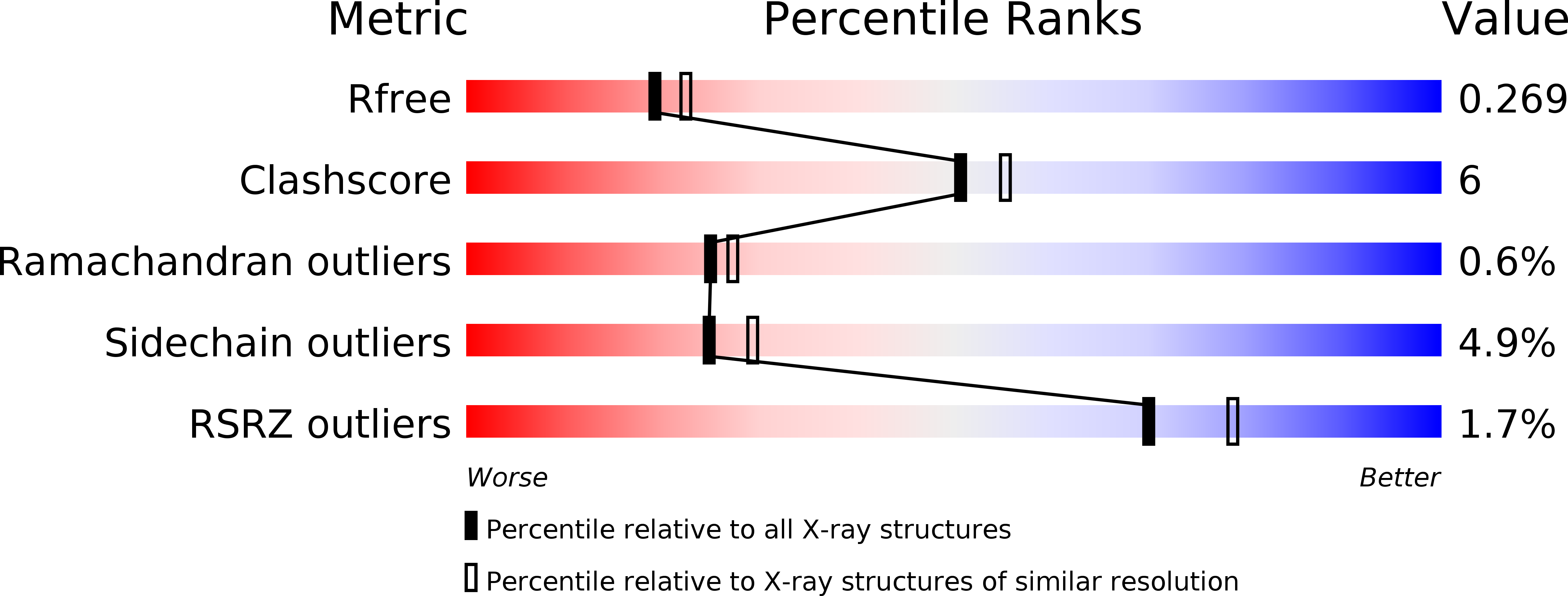The crystal structure of a laminin G-like module reveals the molecular basis of alpha-dystroglycan binding to laminins, perlecan, and agrin.
Hohenester, E., Tisi, D., Talts, J.F., Timpl, R.(1999) Mol Cell 4: 783-792
- PubMed: 10619025
- DOI: https://doi.org/10.1016/s1097-2765(00)80388-3
- Primary Citation of Related Structures:
1QU0 - PubMed Abstract:
Laminin G-like (LG) modules in the extracellular matrix glycoproteins laminin, perlecan, and agrin mediate the binding to heparin and the cell surface receptor alpha-dystroglycan (alpha-DG). These interactions are crucial to basement membrane assembly, as well as muscle and nerve cell function. The crystal structure of the laminin alpha 2 chain LG5 module reveals a 14-stranded beta sandwich. A calcium ion is bound to one edge of the sandwich by conserved acidic residues and is surrounded by residues implicated in heparin and alpha-DG binding. A calcium-coordinated sulfate ion is suggested to mimic the binding of anionic oligosaccharides. The structure demonstrates a conserved function of the LG module in calcium-dependent lectin-like alpha-DG binding.
Organizational Affiliation:
Biophysics Section, Blackett Laboratory, Imperial College, London, United Kingdom. [email protected]
















